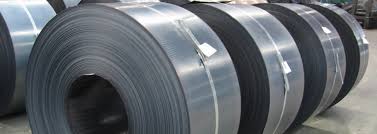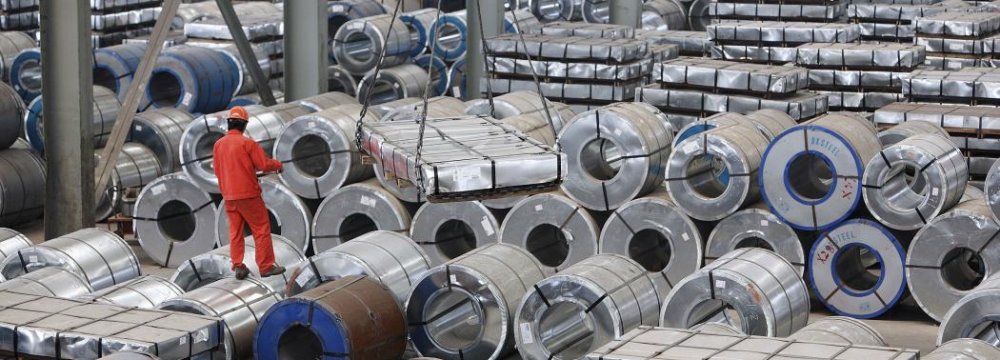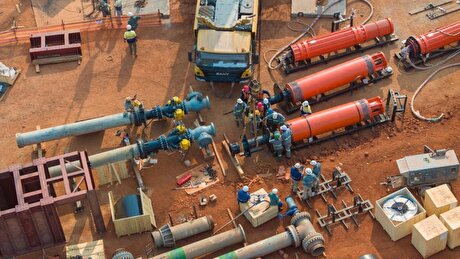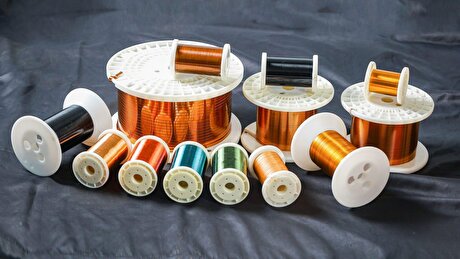
Reduction of Import Tariff on Flats Painful But Necessary


Iran Steel Producers Association is opposed to the decision, whereas smaller producers and representatives of processing industries insist on the revision.
“One of the arguments in favor of reduction is the potential assistance for downstream sectors,” Amir Hossein Kaveh, secretary of the Syndicate of Steel Pipe and Profile Manufacturers, told Metal Expert.
Being highly reliant on HRC, the industry is currently struggling with a shortage of feedstock of 2 mm material due to insufficient supply in the domestic market. Lower import tariffs can help the sector recover its manufacturing activity.
“We have the capacity to annually produce 20 million tons of pipes, so we can meet all the requirements in the Middle East,” he said.
In December 2016, Minister of Industries, Mining and Trade Mohammad Reza Nematzadeh suggested the reduction of duties on less than 3 mm HRC from 20% to 10-15% and on certain sizes of CRC from 20% to 10%.
Such a decision is partially due to the inability of local producers to meet the requirements of the domestic market amid the hike in import duty in the Iranian year that ended on March 20, 2017. The final date of new tariffs coming into force has not been disclosed yet.
In response to the announcement, ISPA addressed their concerns to the minister, saying that weak domestic demand observed in 2016 prompted large producers to reduce output.
“The new tariff codes proposed [by the ministry] include other grades of CRC, the producers of which are operating at less than half their actual capacity due to depressed local demand,” the official statement reads.
As a compromise, the association proposed to reduce the duties on CRC of a thickness less than 3 mm to 10% and preserve the current 20% rate for the material with a thickness of 3 mm and above.
In the HRC segment, the situation is the same. At the end of 2016, the country’s largest flat steel producer–Mobarakeh Steel Company–asked the government to decrease import duties on thinner-gauge material from 20% to 15%.
“We were forced to ask the government to lower tariffs, as the supply and demand are unbalanced in Iran at present. Although we redirected volumes from foreign sales to domestic customers, it is not sufficient to cover their needs,” a company representative told Metal Expert.
At the same time, high import tariffs are gradually supporting the monopoly in the industry by blocking the competition. Major steelmakers have enough room for the price maneuver in the domestic market, while smaller enterprises are struggling with the pressure.
“No longer held back by the onslaught of cheap imports, Iran’s major steelmakers took over the domestic market in the absence of foreign competition and raised prices to make up for their diminished profit margins during the recession,” an Iranian source said.
Not a Cure-All
The ongoing debates concerning import highlight a more important problem in the steel industry–high production costs arising from the use of old technologies. Therefore, the local producers’ key concern has outright internal roots.
“Domestic manufacturers should focus on reducing production costs as higher import tariff is not a cure-all at this point,” a representative of the Iranian mill told Metal Expert.
One way or another, the decrease in import duty on certain flat steel products, if it occurs, will play into the hands of foreign suppliers. First of all, traditional suppliers, such as Kazakhstan, Russia and China, will get an opportunity to ramp up sales to Iran if market conditions become favorable.
Despite import duties over the course of 2016, Kazakhstan and Russia managed to raise shipments of flats to Iranian customers by 7.3% and 45.9% to more than 1 million tons and 786,657 tons, respectively.
“Of course, we will buy Russian material if prices become more attractive amid lower import duty,” an Iranian trader told Metal Expert.
In case of China, however, the situation is not so clear. As Chinese steel producers prefer to focus on domestic sales amid better profitability, the prospects of flat products export from China to Iran is gloomy.
In 2016, China supplied 867,000 tons of flats to the Iranian market, 58.3% down y-o-y.
“As long as the [domestic] market remains strong, there is no sense in exports,” a Chinese source commented.
At the same time, such policy of Chinese steelmakers favors Indian suppliers who have already strengthened their export positions owing to attractive prices and may ramp up sales in Iran.
“More suppliers is always a better choice,” a market participant said.
In addition, India has traditionally had strong ties with Iran since the time of sanctions.
The higher level of duties since the beginning of the last Iranian year (March 20, 2016) led to almost a 30% decline in imports of steel products year-on-year to reach 2.6 million tons in the 11 months to February 18, 2017, mainly amid lower shipments from China, according to ISPA.
The lion’s share in import portfolio, that is 89%, is attributed to flats. The foreign purchases of flat products reduced by 27.8% to 2.3 million tons y-o-y, including almost 1.5 million tons of HRC (–33.6%), 556,000 tons of CRC (–12.9%) and 307,000 tons of HDG (–18.4%).


Trump weighs using $2 billion in CHIPS Act funding for critical minerals

Codelco cuts 2025 copper forecast after El Teniente mine collapse

Electra converts debt, launches $30M raise to jumpstart stalled cobalt refinery

Abcourt readies Sleeping Giant mill to pour first gold since 2014

Barrick’s Reko Diq in line for $410M ADB backing

Nevada army depot to serve as base for first US strategic minerals stockpile

Tailings could meet much of US critical mineral demand – study

Viridis unveils 200Mt initial reserve for Brazil rare earth project

SQM boosts lithium supply plans as prices flick higher

Energy Fuels soars on Vulcan Elements partnership

Northern Dynasty sticks to proposal in battle to lift Pebble mine veto

Giustra-backed mining firm teams up with informal miners in Colombia

Critical Metals signs agreement to supply rare earth to US government-funded facility

China extends rare earth controls to imported material

Galan Lithium proceeds with $13M financing for Argentina project

Silver price touches $39 as market weighs rate cut outlook

First Quantum drops plan to sell stakes in Zambia copper mines

Ivanhoe advances Kamoa dewatering plan, plans forecasts

Texas factory gives Chinese copper firm an edge in tariff war

Energy Fuels soars on Vulcan Elements partnership

Northern Dynasty sticks to proposal in battle to lift Pebble mine veto

Giustra-backed mining firm teams up with informal miners in Colombia

Critical Metals signs agreement to supply rare earth to US government-funded facility

China extends rare earth controls to imported material

Galan Lithium proceeds with $13M financing for Argentina project

Silver price touches $39 as market weighs rate cut outlook

First Quantum drops plan to sell stakes in Zambia copper mines

Ivanhoe advances Kamoa dewatering plan, plans forecasts

















